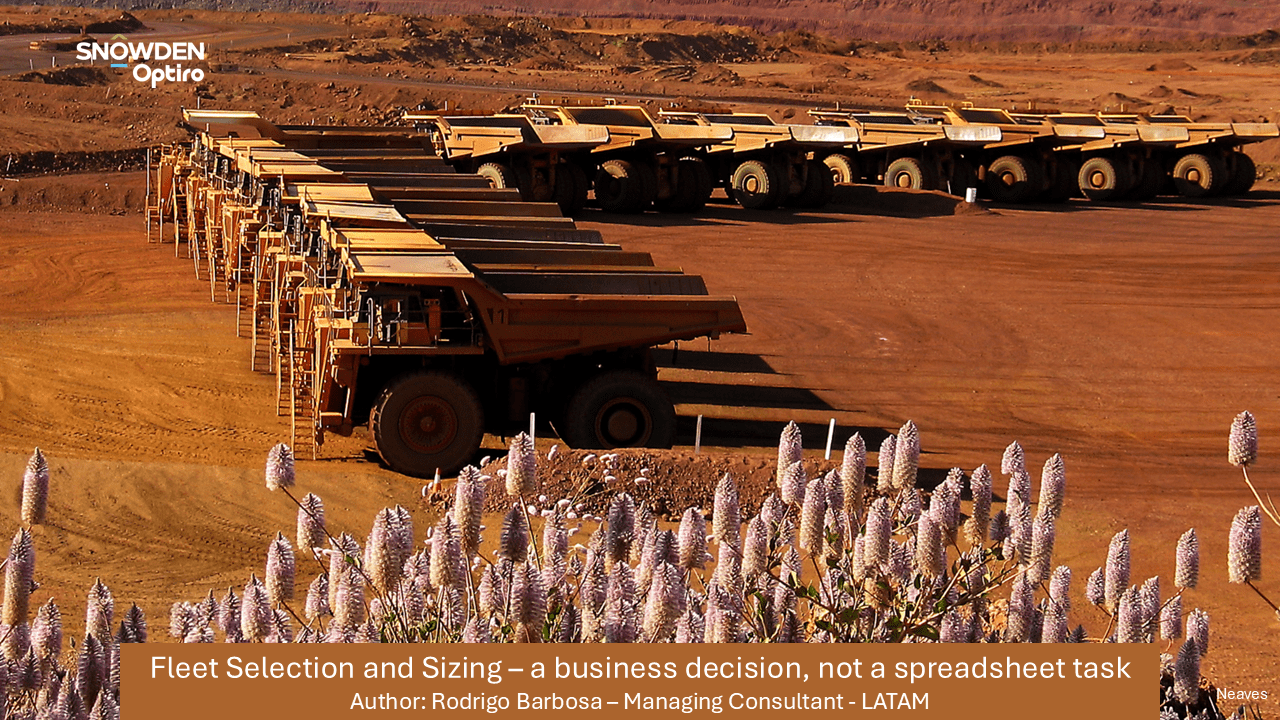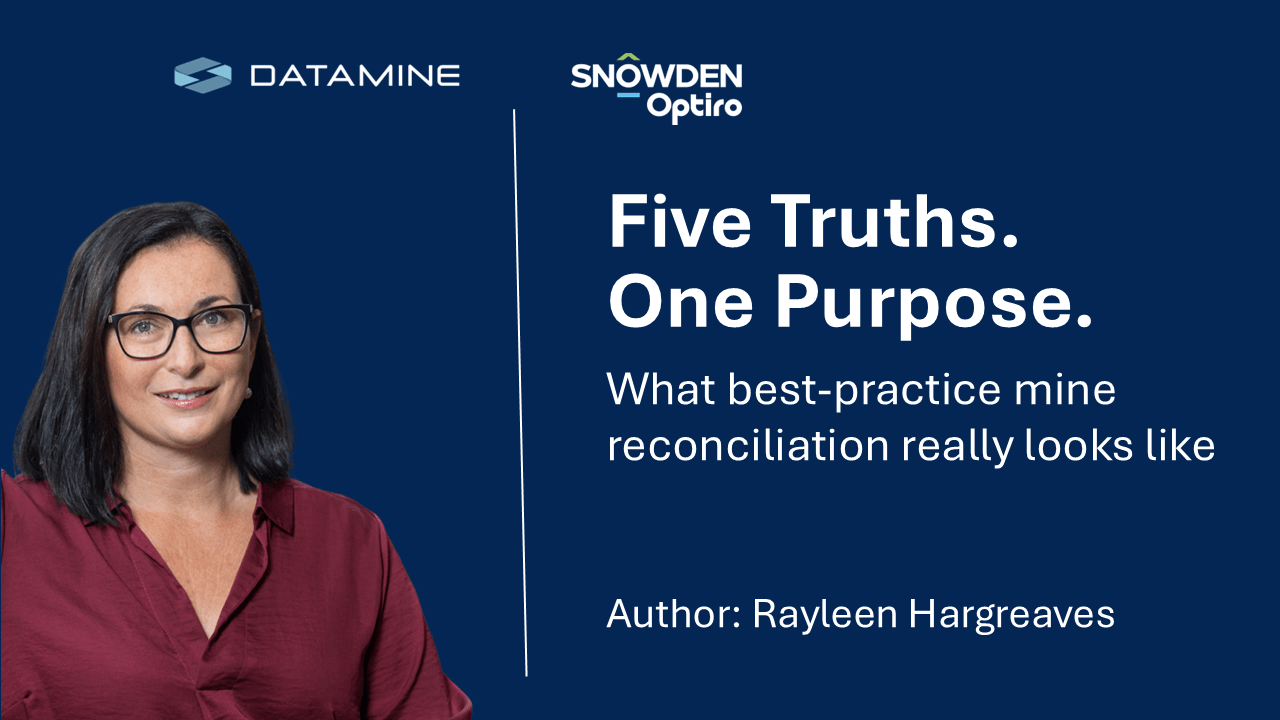
- Snowden Optiro Podcasts & News, Tech talk
Tips and Tricks for Applied Geology
Ian Glacken our Director of Geology and Paul Blackney our Principal Consultant have put together some useful Tips and Tricks to help you with Sampling, QAQC, Resource Estimation and Reconciliation.
Tips and Tricks for Sampling theory and practice
Should you use Aircore samples in your resource estimate? If carried out to high standards, Aircore samples can approach RC in their level of representivity, although it is not suitable for all commodities and lithologies. It is always worthwhile looking at the relationship between Aircore and other sampling types (RC or DD) within an area where there is more-or-less equal representivity of both sample types; there should be no bias over the range of reasonable ‘ore-grade’ values.
Author: Ian Glacken
Remember that some sampling errors cannot be eliminated, but they can be minimised: In addition to the Fundamental Sampling Error, which is the subject of Gy’s theory and its derivations, the Grouping and Segregation Error (GSE) is a function of the size, nature and constitution of the particles, among other factors. The GSE certainly can be reduced through judicious practice, but there are circumstances where the GSE can swamp other errors – you need to be aware of these. Author: Ian Glacken
What is the sampling contribution to the nugget effect? Remember that the sampling error can influence the nugget effect of an orebody, but that the nugget effect, as inferred from a variogram can have more than one component; the inherent nugget, which is a fundamental of the mineralisation and its uniformity (or lack thereof), and poor sampling practice, which can amplify and even swamp the ‘natural’ nugget.
Author: Ian Glacken
Multi-tier riffle splitters can add to sampling error: While Jones riffle splitters can give a statistically correct sample split, this is less likely with a multi-tier splitter and unlikely with a rig-mounted multi-tier riffle splitter. Things to watch out for are the flow of the sample into the splitter (even and continuous), the orientation of the splitter (centred and vertical) and of course the presence of moisture in the sample – even a small amount of water can invalidate the splitting.
Author: Ian Glacken
Be sure to check the orientation of the cone splitter daily: While a cone splitter should and generally will give a matched (equiprobable) pair of field duplicates, the orientation of the splitter is all-important in determining this. The long axis of the splitter needs to be vertical and the widest part of the splitter, i.e. the join between the cone and the chute, needs to be horizontal. This should be checked daily with a magnetic clinometer.
Author: Ian Glacken
Tips and Tricks for QAQC
Always use a ‘multiplot’ to review Standards assay results: Employing a ‘multiplot’ to depict assays received for a set of Standards often allows inadvertent Standards swaps to be readily identified. Reviewing the same data in isolation on individual control charts may otherwise result in a swap being identified as a ‘failure’ event when in fact the standard is a valid test.
Author: Paul Blackney
Employ a minimum of four Certified Reference Materials (CRM’s or Standards) at any one time: A typical protocol is to insert CRMs that allow assay accuracy to be monitored at grades equivalent to the anticipated (or known) break-even cut-off grade, the average mineralisation or ore grade, and at a high grade for the deposit. The fourth CRM should be similar to, but different from, one of these three values – typically the average grade value. For small drilling campaigns, it may be necessary to increase the CRM submission rate to ensure that a statistically meaningful number of results are obtained for each CRM.
Author: Paul Blackney
Field duplicate samples obtained from waste materials add little value to the analysis of sample precision, particularly in precious metal deposits: Sampling protocols often dictate the collection of field duplicate samples at a fixed rate relative to the number of routine assay samples collected. In many deposit types, this practice results in a large proportion of data obtained being derived from low grade waste materials rather than mineralised zones. This information adds little value to the analysis of sample precision. Better practice is to adopt sampling protocols that allow field duplicate samples to be selected after mineralised zones have been identified by the geologist. This approach provides more relevant data but does increase the complexity of the underlying sampling protocol.
Author: Paul Blackney
Always evaluate the cause of any Certified Reference Material (CRM) assay result outside of the certified three standard deviation grade range: Statistically, less than three in each 1,000 results should be outside this range, making this protocol a useful tool for identifying when to investigate further. Some QC protocols dictate that investigations are undertaken if a CRM assay result lies outside of the certified two standard deviation grade range. This protocol will leads to a lot of misplaced effort as in excess of 4% of all results should legitimately be outside this range. If significantly more than 4% of the assay results lie outside of the two-standard deviation range, then further investigation is warranted.
Author: Paul Blackney
Blanks should never be inserted at regular intervals within the sample stream: It is always much more easy for automation of the QAQC process that blanks are inserted at regular intervals, but this is not optimal and is in fact a waste of money. Since blanks are designed to test contamination between samples due to the preparation equipment, the best ‘value’ from a blank is to be placed within or immediately after a high-grade zone (if these can be identified a priori). This is a hassle for system design but arguably the value outweighs the cost.
Author: Ian Glacken
Don’t forget density QAQC: In some orebodies the bulk density or specific gravity is not a major contributor to the outcome, but in the majority of deposits it is as important to get density right as it is to ensure correct assays. This means having a density standard (an aluminium cylinder is preferred) and thinking about doing density duplicate measurements. The concept of a blank is not so applicable. Of course correct bulk density determination is critical for an orebody with oxide and transitional weathered material.
Author: Ian Glacken
Tips and Tricks for Resource estimation and evaluation
What to do if you have conditional bias: Get more and closer-spaced data, estimate into larger volumes (this generally works – but not always), think about a change of support if this isn’t possible, and choose an estimation method which doesn’t exaggerate the bias.
Author: Ian Glacken
Be aware of the limitations of ID estimation: Inverse distance (ID) is often touted as a viable alternative to Ordinary Kriging (OK), and it can be – but you must appreciate its two or three very serious limitations and correct for these. The limitations are that there is no accounting for data clustering (unlike OK) and the choice of a power is essentially arbitrary. As long as you are aware of these issues, ID can sometimes be used as a ‘check’ technique for OK.
Author: Ian Glacken
Always look at a range of top-cut (capping) techniques: There is no single ‘magic bullet’ technique for top-cutting a set of data; the top-cut chosen will depend upon the nature of the data, the support of the data and the location of the sample points. Best practice is always to look at two or three different approaches to cutting and see if there is a commonality between one or more methods. If the outcome is sensitive to the top-cut level chosen then it will pay to carry out a sensitivity test on different cuts.
Author: Ian Glacken
Capping before compositing or after? This is a controversial topic which has adherents on both sides, although most believe that capping should be carried out after compositing, when the data has equal support. If you are going to cap before you composite the data, then the capping should be carried out with the variable as ‘metal’ or accumulation (grade times length), rather than just the assay itself.
Author: Ian Glacken
Don’t ignore the effects of clustering on data statistics: if you don’t correct for clustering any statistics that you derive from the data will be wrong. Don’t assume that just because a set of drilling data is (more or less) on a regular grid that there are no clustering effects. It only takes a few minutes to look at the effects of clustering and it can save (or damn) your project.
Author: Ian Glacken
Remember that declustered data statistics are not perfect: Applying declustering is a good idea for many drillhole data sets, but recognise that it’s not a perfect process. During optimisation of the declustering process, it should be apparent that parameter selection varies the outcome to some degree. Recall this imprecision when comparing whole-of-domain grade statistics after block grade estimation – differences may be within the precision of the declustering process and therefore not necessarily worthy of follow-up action.
Author: Paul Blackney
Every step of the resource estimation process should be validated in some way: While this may sound onerous and time consuming, it doesn’t need to be. For instance, check the downhole compositing process by determining the total sample length before and after compositing – it should be the same or nearly the same. The cause of any difference should be determined and either corrected or understood before proceeding.
Author: Paul Blackney
Try to formalise the confidence in your resource categories: at least for a given deposit and/or commodity, try to communicate to all of the stakeholders what error (plus or minus, in metal terms) is meant by Measured, Indicated or Inferred Resources. Everyone will have an idea, you just want everybody to have the same idea for the same category. Commercial personnel and Engineers will generally have a more optimistic view of the confidence intervals than Geologists – you all need to be on the same page to manage expectations.
Author: Ian Glacken
Don’t assume that geological and grade continuity are the same thing: In an ideal world your deposit will have geological and grade continuity – but they are not the same or present to the same degree. Some strongly continuous geological structures can have very poor grade continuity, and some discontinuous structures can in fact have good grade continuity. The scale of examination is important, and the most important scale is the scale of mining.
Author: Ian Glacken
The volume-variance relationship is the key to resource estimation: understanding the relationship between samples of a certain size and their variability, and how this variability changes at different volumes (supports), can explain many of the apparent problems in a resource estimate. Using one scale of estimate when you need a smaller or a larger scale is still a very common mistake.
Author: Ian Glacken
Tips and Tricks for Reconciliation
Stockpile volumes: Remember that if you have a large stockpile, and particularly one which has a second layer on it, that you will need to increase the loose rock bulk density as compression will have occurred from trucks driving up on the broken rock. You may need to increase the loose rock bulk density by as much as 30%. It may pay to do a volume survey of a discrete area and compare this with the accurate tonnage removal (as measured off the primary crusher weightometer) to calibrate the bulk density.
Author: Ian Glacken
Accounting for development volumes underground: Unless development is strictly on lines and the ore is either much wider or much narrower than the development face, the drives may meander and stripping cuts may need to be taken to straighten up the profiles. Don’t forget to account for any ore stripping in the end of month development volumes.
Author: Ian Glacken
Grab samples from ore passes: Deriving grades from underground ore passes, especially in precious metal mines, is a hit-and-miss activity at best, and may give a woefully biased sample at worst. However, if you must sample ore passes (and it’s not recommended), lots of small samples (5-10 kg) taken over a few days, rather than one larger (20-30 kg) sample per shift.
Author: Ian Glacken
Stockpile sampling methods that don’t work: All of them. Well, apart from processing the entire stockpile (and nothing else) through a two-stage crushing system and taking an unbiased sample through a stream cutter, a dry vezin sampler, or at a pinch, a cross-belt sampler.
Author: Ian Glacken
Beware temporary stockpiles underground: These may be the home for parcels of ore for a few shifts and may not be part of the official stockpile list. It is very easy to miscount or double count material movements when temporary and ephemeral stockpiles are used. A robust material tracking system may help to resolve counting issues but extreme diligence is called for!
Author: Ian Glacken
Process mapping is the key to reconciliation: The heart of a robust reconciliation system is understanding your current process flow, in terms of measurement points, stockpiles, surveys, moisture, tonnage and grade recording, materials handling and re-handling, blending and treatment of ore from diverse sources. Once you understand this then you can streamline or refine the documentation and recording.
Author: Ian Glacken
Where is the mine/mill changeover point? Surprisingly, it’s not always at the same place at every mining operation. The logical point for the end of the mine recording (claimed tonnage and grade) is when ore goes into the primary crusher, but in some cases the ‘mine’ stream stops at the crushed ore stockpile (the cone) and in others the mill stream starts at the ROM pad. Once this transition point is fixed and understood then a deeper understanding of ‘claimed’ and ‘actual’ ensues.
Author: Ian Glacken
Don’t ignore moisture in reconciliation! Although much of Australia is dry we do have wet spells, and any mine in the tropics or in the northern hemisphere is going to have to cope with water to a greater or lesser degree some time during the year. Every reconciliation reading needs to be on a dry tonnes basis, which means for those wet (or potentially wet) readings then moisture needs to be measured and subtracted. Thankfully this is an easy task – but often ignored.
Author: Ian Glacken
Spreadsheets are not databases! Spreadsheets are the cornerstone of reconciliation reporting and analysis but are not the best repositories for raw data. Any large spreadsheet which is not locked down is almost certain to have errors, and if this is the main storage area for the raw reconciliation data then there will be problems. Databases, whether through a production tracking system or a custom industrial-strength application, are no-brainers for storing raw reconciliation data.
Author: Ian Glacken
Who does the reconciliation? It shouldn’t matter! A robust and auditable reconciliation system is one within which the outcome doesn’t depend upon the operator. In other words, the flow and the data reduction and processing should be totally objective – any approach which relies on individual subjectivity is doomed to failure.
Author: Ian Glacken
Reconciliation best practice: No subjectivity; a robust industrial-strength database at the heart of the system; no spreadsheets for mission-critical data; charts and colours make understanding the figures easier; practice one-page management; don’t forget moisture; customise the results and the levels of detail for the various stakeholders.
Author: Ian Glacken
Authors of the Tips and Tricks for Applied Geology

BSc (Hons) (Geology), MSc(Mining Geology), DIC, MSc(Geostatistics), Grad Dip Computing, FAusIMM(CP), FAIG, MIMMM, CEng
Ian is a geologist with postgraduate qualifications in geostatistics, mining geology and computing who has more than 30 years’ worldwide experience in the mining industry.
Ian’s skills are in resource evaluation, quantitative risk assessment, strategic advice, geostatistics, reconciliation, project management, statutory and competent person reporting and mining geology studies.
Ian presents the following technical training courses: Sampling Theory and Best Practice; Getting the most out of QAQC Data; Practical Reconciliation; Resource Estimation and Evaluation; Recoverable Resources – getting it right the first time; Report Writing for Geologists and Engineers; Corporate Compliance in Resources and Reserve Reporting. For details about these courses, here is a LINK to the Training page.
EMAIL: iglacken@snowdenoptiro.com

BSc(Hons) (Geology), MAusIMM, MAIG
Paul is a geologist with more than 30 years’ technical and operational experience, Paul’s skills include resource evaluation, technical audits and reviews, geostatistics, reconciliation, grade control, competent persons reporting and project management.
His experience includes extensive experience in many types of gold deposits from narrow vein extreme nugget variations through to porphyry copper gold styles, substantial iron ore experience and significant exposure to PGE, base metal, mineral sands and other commodities.
Paul presents the following technical training courses: Essential Excel for Geologists; Sampling Theory and Best Practice; Getting the most out of QAQC Data; Resource Estimation and Evaluation. For details about these courses, here is a LINK to the Training page.
EMAIL: pblackney@snowdenoptiro.com
Related Posts
We provide a lot of great technical content for free!
Subscribe here for our podcasts, technical articles and news



